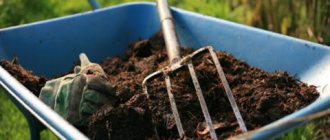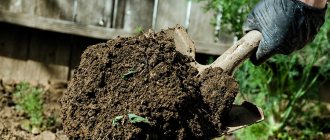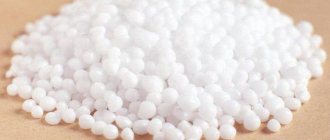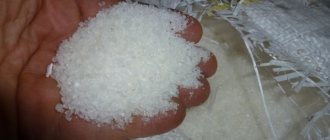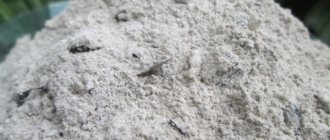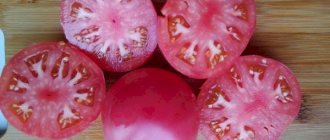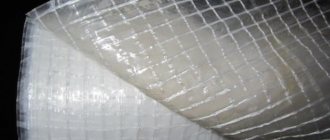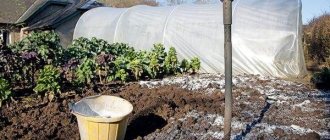Soil liming is a special treatment process used to remove excess acid from the soil to improve the soil's nutritional properties. This treatment not only reduces acidity, which is harmful for most crops, but the soil itself becomes looser, and as a result it retains moisture better. There is another aspect of liming: lime saturates the soil with calcium and magnesium, which are often lacking in cultivated crops.
Liming Basics
The basis of any acid is hydrogen, so, from a chemical point of view, liming is the replacement of hydrogen atoms with other chemical elements (most often calcium, magnesium), followed by the decomposition of the acid and the formation of salt. The catalyst for the reaction is carbon dioxide, which is constantly contained in the soil. During the reaction, it forms a transition salt of calcium carbonate, which subsequently reacts with the acid. In this case, limestone and chalk allow you to lower the acidity level of the soil as loyally as possible, and also create nourishment for plant roots. It is worth noting that the more calcium there is in the soil, the harder it is. This can lead to difficulty growing plant roots (especially those with weak root systems). Therefore, excessive liming is not recommended. Calcium is not washed out of the soil by rain.
Substances similar in composition to lime are also used for fertilizer. Lime fertilizers used for land reclamation:
- calcite,
- limestone,
- dolomite flour,
- slaked or quicklime,
- oil shale ash,
- lake lime,
- blast furnace slag,
- cement dust,
- sugar production waste
- peat tuffs.
In each individual case, their own soil liming rates are calculated.
There is a misconception that liming is best done with gypsum. In fact, gypsum is applied exclusively for the reclamation of soils with increased salt deposition.
Hydrogen indicator
If all conditions are met, the water-soluble substance must disintegrate into ions. But in practice everything is a little more complicated. The main number of salts, which are based on alkali and alkaline earth metals, as well as some acids, disintegrate upon contact with water. But acetic, hydrocyanic and silicic acid, as well as iron hydroxide are the exception to the rule. Therefore, the acidity in the medium also depends on the ability of the substance to decompose into ions.
Water has a neutral medium; the amount of H+ in it is equal to the amount of OH-. Thus, the content of each is 10-7 mol/liter. 7 is a neutral environment, and the top number is the hydrogen indicator.
On a note!
In a strongly acidic environment the value may be negative.
Results achieved by liming soils
The main advantages of the process:
- The soil is enriched with microelements that improve plant development.
- Organic fertilizers begin to yield 30-40% more returns.
- The activity of some beneficial microorganisms increases.
- The structure and properties of the soil (water resistance, for example) improve.
- The level of toxic elements in grown plants is significantly reduced.
It must be said that the results of liming appear progressively. In some cases, improvements occur only after several years. Therefore, liming should not be done annually.
But, if ammonia preparations are used as fertilizers, liming should be carried out regularly. Repeated liming also depends on the addition of these fertilizers. If, for example, the soil is regularly fertilized with manure, it is recommended not to carry out repeated liming.
In autumn or spring
The soil is limed mainly in the fall. It is better to do this before digging or plowing, since the fertilizer begins to act only after being embedded in the ground. Before the onset of cold weather, lime will already have time to fulfill part of its responsibilities. The process will continue into the winter. And by spring, the soil will noticeably change - the percentage of acid will decrease, and there will be much more microelements in the soil.
Note. There is no point in spreading lime over the snow in winter. Until spring, the fertilizer will lose most of its nutrients.
In the spring, the soil is limed in one case: if the acidity is very high and there are no plans to sow in this area. In other cases, it is scattered in a thin layer over the area and dug up. This is done 3 weeks before planting so that the active substance has time to begin to act and does not burn the plant rhizomes.
Most often, trees are whitewashed with lime in the spring. This procedure protects fruit crops from negative ultraviolet rays, pests and rodents.
Acidic soils and plants
Of course, different types of cultivated plants require different soils. Most plants love neutral soil. The few crops for which acidic soil is preferable include:
- potato,
- chokeberry or lupine,
- tea,
- most varieties of winter crops.
At the same time, acidic soils are completely unsuitable for legumes; currants, cabbage, beets, mustard, clover and most vegetables thrive on neutral or slightly acidic soils.
Of the trees, apple trees, pear trees, raspberries, gooseberries and strawberries grow well in slightly acidic soils. Cherries and plums love alkaline soils.
Weed control
The second purpose of this fertilizer is weed control. Weeds, which in the absence of control and timely destruction by the gardener become a real problem, growing and interfering with planting, do not tolerate alkaline soil.
Among these lovers of an acidic environment, you can notice many notorious pests :
- wild rosemary;
- sedge;
- creeping buttercup;
- big plantain;
- sorrel;
- wild mustard;
- meadow cornflower;
- club moss;
- daisy;
- cinquefoil, etc.
You can get rid of all these plants not only physically, but also by simply changing the acidity level to a lower one - the weeds simply cannot exist in such conditions and will die without producing offspring.
What soils require liming?
Before you improve the fertility of your plot, you need to find out whether the soil actually has acidity, and for effective fertilization, you must first of all correctly calculate the amount of lime per volume of the soil complex being fertilized. And the need for liming itself should be established, in an amicable way, on the basis of special agrochemical analyses. The calculated dose of lime material will depend on the acidity of the soil and the presence of humus in it.
In general, regarding the question of which soils require liming, you need to remember that the following have a high level of acidity:
- red soils,
- soddy-podzolic soils,
- gray forest,
- peat swamps.
Acidic soils are characterized by a whitish tint, and when digging the area, layers of the same color are noticeable. At the same time, acidic soil is not necessarily evenly distributed throughout the entire area, but may only be in some places. Most likely, if mint and sorrel, horsetail and plantain, fireweed and heather grow wildly on the site, soils with high acidity predominate on it.
How to independently determine the pH level in the soil
Some weeds often grow on acidic soils, for example: pike, horsetail, sorrel and creeping buttercup. If a large number of them are noticed in the garden, then the pH is definitely increased. Also, the fact that the soil is acidic is indicated by a whitish layer on the upper layers of the soil.
You may be interested in:
Disinfection of polycarbonate greenhouses: how to treat them in the fall After the end of the summer season and harvest, experienced summer residents begin to think about preparing for spring. How to process...Read more...
On a note!
Clover cannot grow on acidic substrates.
Litmus paper will help determine acidity; it is often used as an indicator to determine pH. Of course, you shouldn’t expect accurate results, but it can determine whether the environment is acidic. Some gardeners use traditional methods, these include the use of acetic acid, chalk or cherry leaves, but the exact result is not guaranteed. You can also purchase a special electronic indicator with a probe; it is quite simple to use. For more detailed analyses, the soil is sent to a laboratory for analysis.
When to lime
If it has been established experimentally that the soil needs liming, it is necessary to carry out the procedure in accordance with generally accepted requirements. First of all, this applies to the period of work (performed in the fall, before arable work). First, lime flour or other material used for liming is spread evenly over the site, and then organic fertilizers, after which the soil is dug up. Autumn rains will evenly distribute lime at the depth where the roots of cultivated plants are located. This procedure will provide the soil and plants with the necessary substances for a period of up to 10 years.
There is also the option of liming acidic soils in small portions - it is carried out in early spring and is much more effective, as a result of which it is widely used in practice. Liming of the soil in spring is carried out shortly before the first loosening of the soil. Liming is recommended to be carried out before fertilizing the soil with various biological and chemical additives. Lime, in its own way, increases the absorption properties of the soil; accordingly, they are absorbed much faster. It is permissible to add chalk or lime to the beds in very small portions, mixing it with humus directly on the ground. In practice, it turns out that only 2-3 kilograms of lime, which are added to beds with humus, in terms of their effectiveness give the same result as 10 kg of lime flour simply scattered over the site.
There is one important point: lime changes the percentage of calcium and potassium in the direction of increasing the former, and therefore in liming it is worth increasing the dose of fertilizers containing potassium.
Whitewashing trees with quicklime
Even those who do not have their own garden or any other farm containing fruit trees have noticed that the trunks are often treated with white lime mortar. This is a well-known rule for any gardener who wants to keep trees in the best condition - lime is a good protection for them.
Why is this necessary :
- Thermal insulation . In general, frost does not harm the tree, but with strong changes in temperature and humidity, ice may appear, which penetrates under the bark and spoils it, depriving the tree of protection.
- Protection from parasites . Many pests feed on the bark, but the shell, covered with lime, is not touched. Also, the chemical composition of such whitewash prevents the development of diseases typical of trees.
- Overheat protection . Not everyone knows that tree bark tends to overheat, crack and fall off the trunk in pieces, and lime reflects the rays well.
The entire tree does not need to be treated with lime - only the lower part of the trunk needs to be “painted”. Such preventive procedures for trees are carried out in the fall and spring - before winter cold and summer pest infestation.
There is an opinion that young trees cannot be protected in this way, but this is a myth. On the contrary, the thin bark of such plants needs protection even more.
If a gardener is concerned about the condition of the bark, he should think in advance about how much substance will be used - the norm for an adult tree can be halved.
Liming the soil at home
In order to find out the chemical composition of the soil on your own, without resorting to special research, you need to shake a couple of spoons of soil in a glass of water and leave for a while. When the turbidity settles to the bottom, several layers will be visible: the lowest one will consist of pebbles and sand, a little higher there will be a clay layer, and particles of humus and plants will float on the surface, which over time, having collected water, will settle on the clay layer. To determine the acidity level, you need to find out which layer occupies the maximum volume:
- if sand predominates, the soil is sandy,
- if the clay layer predominates, the soil is clayey,
- if the layers of sand and clay are approximately equal, the soil is sandy loam or loamy.
How to prepare lime flour
Liming the soil at home occurs as follows:
- on a flat area with a dense surface, spread quicklime in an even layer 8-10 cm thick,
- then spray it with water,
- after 20 minutes to half an hour, part of the lime will be extinguished and dry,
- the resulting flour (the so-called fluff) is collected in a container, and the remaining lumps are moistened again.
Water consumption will be about 3-4 liters per 100 kg of quicklime.
By the way, if quicklime is stored in the air for a long time, it turns into fluff naturally, absorbing moisture contained in the air. Of course, this is a very long process.
The resulting powder (fluff) is added to the soil. The depth to which lime is applied is the depth of the soil layer that needs to be treated, usually about 20 cm. If lime is applied to the soil in incomplete doses, then the depth is very small, about 4-6 cm.
Naturally, the more acidic the soil, the greater the amount of lime that will need to be added.
How is this achieved?
Lime, especially quicklime, is an active alkaline substrate. It not only increases the alkalinity of the soil, but also neutralizes aluminum ions - the main culprits of high acidic pH, binding them into insoluble, and therefore harmless to plants, forms.
Of course, quicklime should not be used to deoxidize the soil. And mainly due to the fact that it always consists of lumps of different sizes, difficult to crush, and this is dangerous for your health - the dust inevitably formed during such grinding gets into the respiratory tract and can cause a burn of the laryngeal mucosa. And large fragments of quicklime in the soil:
- They will irreversibly destroy the microflora living there.
- They will disrupt the vital activity of soil worms and humus suppliers.
- They will deoxidize unevenly, leaving large lumps in highly alkaline areas.
Therefore, for liming, they use ready-made slaked lime called “fluff”, or they slak it themselves. Moreover, this process is not difficult at all. For 1 kilogram of quicklime you need to take 4 liters of clean water. After completing the process, leave the resulting swollen mass and lime milk for 2 days.
During this time, the solid particles will settle, and the remaining limewater on top is drained. The solid sediment is dried and crushed - its structure is homogeneous and easily crumbles and grinds into safe dust. But it’s easier to buy ready-made fluff, already dry and crushed in a form convenient for applying to the soil.
Soil liming standards
The main and most used lime fertilizer is limestone ground into flour. It is for this that further approximate calculations of the amount in kilograms to be applied per 1 square meter will be given. m of soils of different acidity:
- the most acidic (pH below four): 0.5-0.6,
- strongly acidic (pH four): 0.4-0.5,
- acidic (pH from four to five): 0.3-0.4,
- moderately acidic (pH from five to six): 0.25-0.3.
The pH value indicates acidity. At pH:
- 3-4 soil is considered acidic,
- 5-6 – slightly acidic,
- 6-7 – neutral,
- 7-8 – alkaline,
- 8-9 – highly alkaline.
In the case of using analogues of ordinary lime, we present the percentage of calcium content:
- 135% - slaked lime,
- 75-108% - dolomite,
- 90-100% - chalk,
- 75-96% - calcareous tuff,
- 70-96% - lake lime,
- 95-108% - dolomite flour,
- 25-75% - marl,
- 10-50% - peat tuff,
- 80-90% - belite flour,
- 65-80% - oil shale ash,
- 80% - cement dust,
- 85% - open-hearth slag,
- 150% - burnt dolomite dust,
- 120% - gas lime,
- 110% - podzols from leather factories,
- 140% - carbide lime,
- 10-50% - peat ash.
To calculate soil liming rates, that is, the amount of lime waste that needs to be applied, the dose indicated for ground limestone must be multiplied by 100 and divided by the percentage of lime given for the selected type of fertilizer.
Overdose
Possible harm from it depends on the type of agromeliorant, the crop that will grow on freshly limed soil. Usually, negative consequences occur when using slaked lime, which often burns plants because it is an alkali, because the rest are carbonates.
As for the characteristics of crops, potatoes most often suffer from excessive liming. This manifests itself in increased susceptibility to scab and decreased starch content. These consequences, especially the latter, more often occur with insufficient potassium supply.
Every experienced farmer knows that in order to get a good harvest from his plot, it is necessary to take into account the acidity of the soil. The initial acidity depends on the type of soil, but agricultural work leads to a gradual decrease in this parameter. Therefore, it is necessary to periodically lim the soil.
